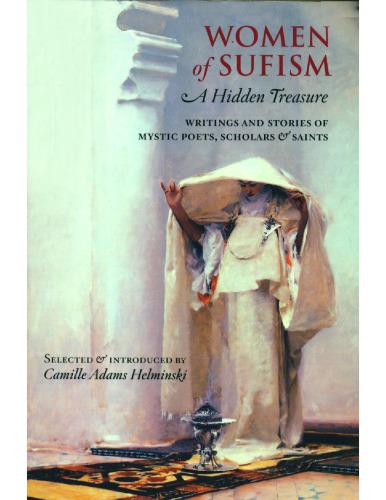
Women of Sufism
A Hidden Treasure
- اطلاعات
- نقد و بررسی
- دیدگاه کاربران
نقد و بررسی

February 10, 2003
Helminski was the first woman to publish an English translation of the Qur'an and has built a career out of reprinting classic Sufi materials. This collection of primary sources casts a spotlight on the roles women have played in Sufi history: because Sufism sheds hierarchical and social distinctions in favor of a total consummation with the Beloved (Allah), women have always held an important position, says Helminski. The collection opens with early writings about Sufi women, most of which were written by men, and some of which have only recently been made available in English. Here we learn of Rabi'a al-'Adawiyya, an eighth-century saint about whom many legends were composed, and the ninth-century healer Lady Nafisa, who was renowned for her Qur'anic knowledge and whose tomb is still a sacred destination for spiritual pilgrims of many religious traditions. Helminski goes on to offer writings by and about Sufi women up to the present day, including poetry (Rumi has some competition!), folklore, prayers, songs and journal entries. Helminski does a fine job of introducing each subject, placing each shaykha
(female teacher) in her historical context and explaining why she should be remembered. Some of the contemporary women are particularly interesting, such as Russian-born Sufi author Irina Tweedie, who describes her gradual path toward Sufism. This collection of women's voices is a rich and varied resource for understanding women of "The Way."

March 1, 2003
With this selection of writings from different women and places throughout Islamic history, Helminski-cofounder and codirector of the Threshold Society, a Sufi organization-offers a history of women in Sufism, Islam's mysticism. Chapters are arranged by time and region, spanning from the time of Muhammad (the seventh century) to the present and including poems, journals, scholarly essays, and more. In her introduction, Helminski describes contemporary women's involvement with Sufism as it developed from the early centuries of Islam. Throughout the stories and experiences gathered here, readers learn about women's place and voice in the Sufi experience, showing their participation in a long line of traditions, teachers, and study. More personal than analytical, this book is appropriate for readers interested in women's religious experiences and for those wishing to learn about this mystical tradition, whose customs few are familiar with. For larger public and academic libraries.-Naomi Hafter, Baltimore
Copyright 2003 Library Journal, LLC Used with permission.




دیدگاه کاربران